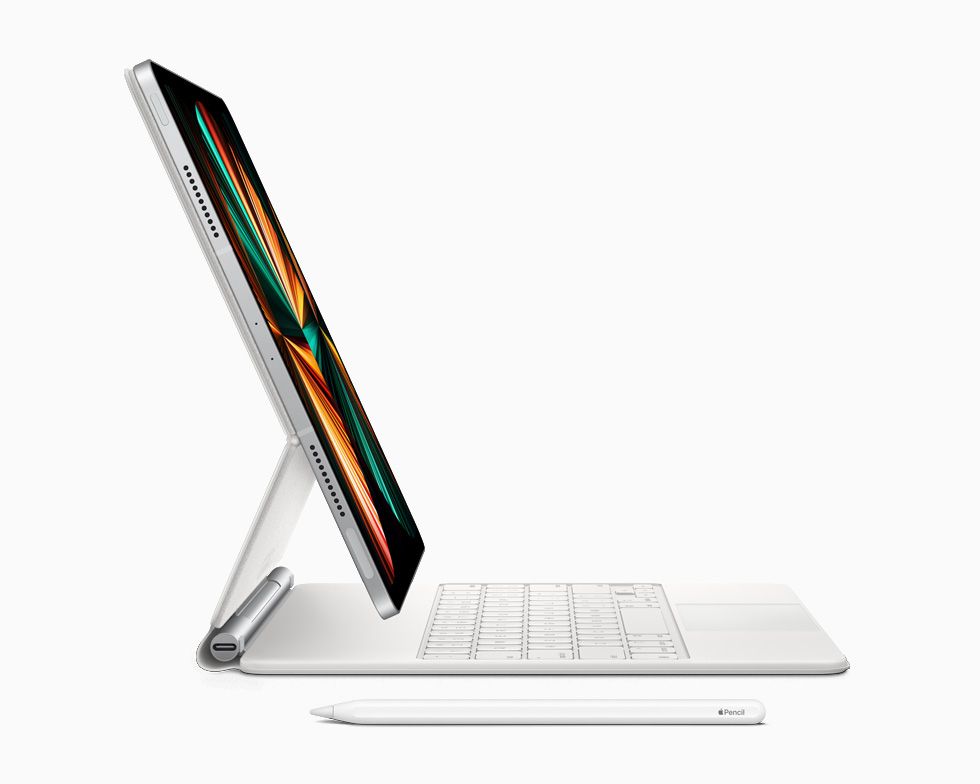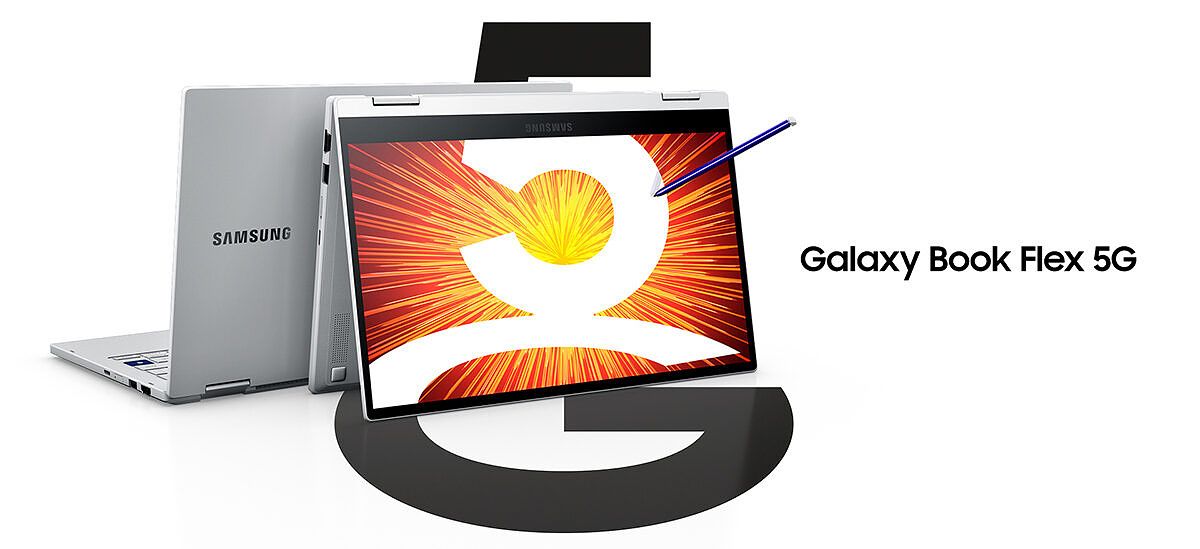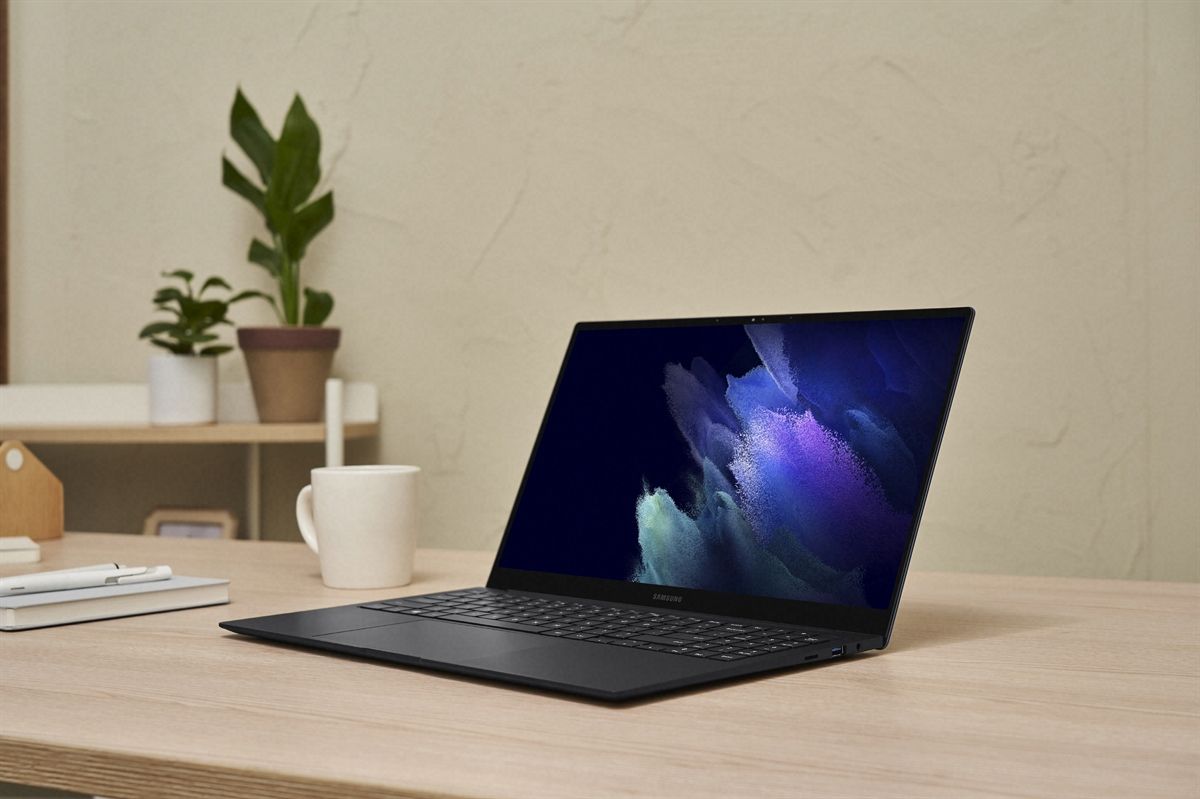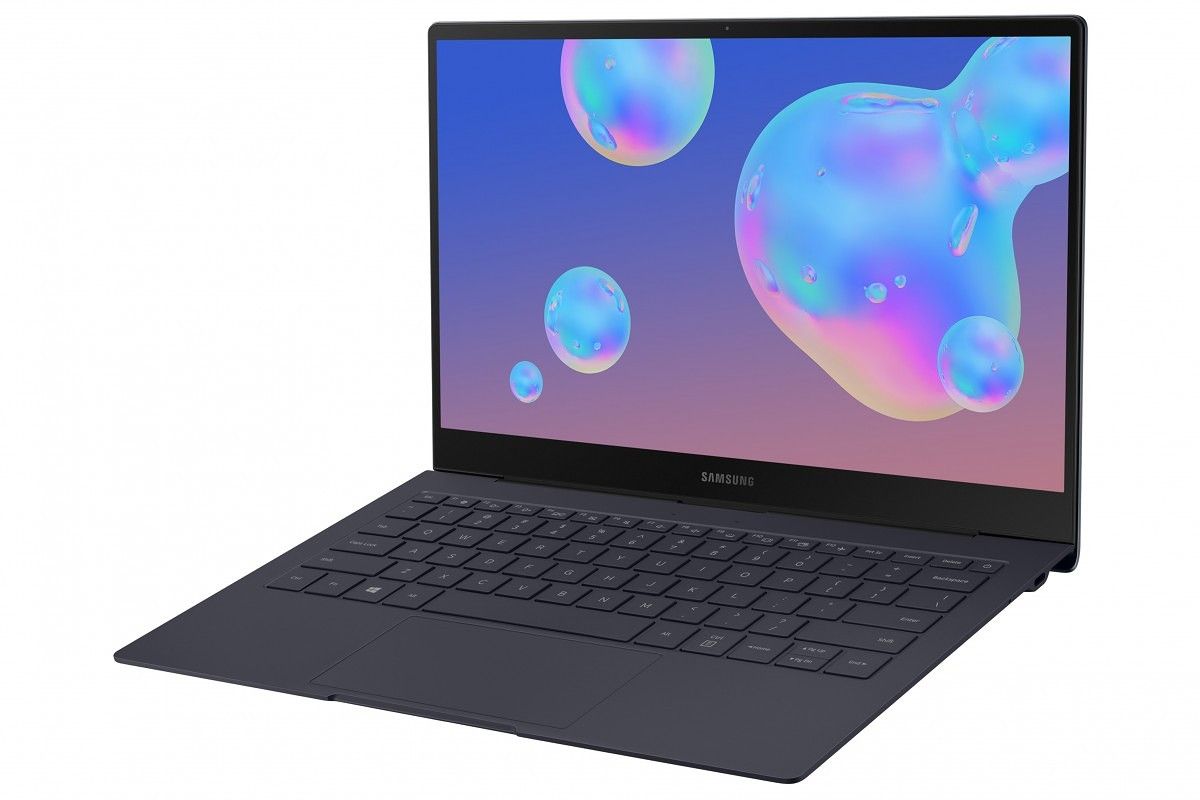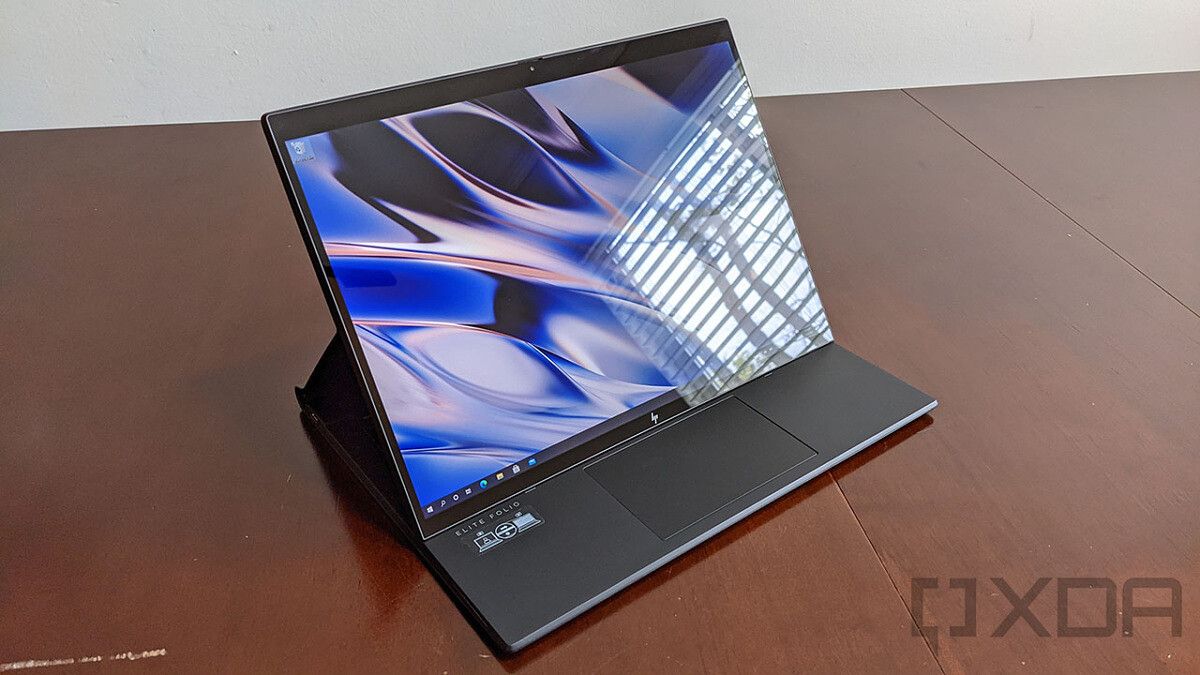HP’s Elite Folio is the best Windows on ARM PC. It has a form factor that blends laptop and tablet form factors without making significant compromises on either. Moreover, it takes the premium aspect of HP’s EliteBooks and puts it into this completely new product.
It’s powered by a Snapdragon 8cx Gen 2 processor, which means that you can also get it with 5G. HP actually sent me the 4G LTE model, but to be fair, the 5G model only supports sub-6GHz speeds, so it’s not all that different.
The hardware comes in vegan leather, a new take on the leather Spectre Folio. HP made some other tweaks too, such as having a metal keyboard deck and a pen garage built into the keyboard. Most importantly, the keyboard is phenomenal. If you’re comparing the HP Elite Folio to other Windows on ARM PCs, it blows them away. If you’re comparing it to other business PCs in its class, well, HP has some serious competition.
HP Elite Folio: Specifications
| CPU |
Qualcomm Snapdragon 8cx Gen2 5G (up to 3.0GHz burst frequency, 4MB L3 cache, 8 cores) |
| GPU |
Qualcomm Adreno 690 Graphics |
| Body |
11.75×9.03×0.63in, 2.92 pounds |
| Display |
13.5″ diagonal, WUXGA+ (1920 x 1280), touch, IPS, BrightView, Corning Gorilla Glass 5, 400 nits, low power, 72% NTSC |
| Ports |
2 SuperSpeed USB Type-C 5Gbps signaling rate (USB Power Delivery, DisplayPort 1.4)
1 headphone/microphone combo
1 Nano-SIM |
| Memory |
16GB LPDDR4-4266 MHz RAM (onboard) |
| Storage |
512GB PCIe NVMe TLC SSD |
| Audio |
Bang & Olufsen, quad stereo speakers, dual array microphones |
| Webcam |
720p HD privacy camera |
| Keyboard |
HP Premium Collaboration Keyboard – spill-resistant, backlit keyboard
Clickpad with multi-touch gesture support |
| Connectivity |
Qualcomm Atheros 802.11a/b/g/n/ac (2×2) Wi-Fi and Bluetooth 5 combo
Qualcomm Snapdragon X20 LTE Cat 16 |
| Battery |
HP Long Life 4-cell, 46 Wh Li-ion, 65W USB Type-C adapter |
| Color |
Black |
| OS |
Windows 10 Pro |
| Price |
$2,063 |
HP sells this model preconfigured, except with a 256GB SSD, for $1,889. Interestingly, that 256GB model was actually the one that the company said it sent reviewers. Anyway, customized with the 512GB SSD, it comes out to $2,063. 5G will run you an extra $243 or you can save $201 by getting the Wi-Fi-only model.
There’s a $444 price difference between Wi-Fi only and 5G, and Qualcomm blames OEMs for these kinds of price hikes. The San Diego firm’s messaging is always that it wants cellular connectivity to be standard and that customers shouldn’t have to pay more for things like 5G.
Design: The HP Elite Folio is made out of vegan leather
If you’re familiar with the Spectre Folio, this is a different beast. Let’s start out of the gate with the color, because the Spectre Folio came in a brown that made the leather material obvious. The HP Elite Folio is made of black vegan leather, and it’s a lot more subtle.

Vegan leather also made for a cleaner design. With leather, there’s a lip around the edges, but vegan leather is easier to bond. It’s just the bottom of the device and the top of the lid that are vegan leather.

Stamped in the vegan leather is the premium HP logo, as opposed to the circular one you’ll find on mainstream PCs. That crease across the back is a hinge. When you open up the device, you can pop out the display to fold it in folio or tablet mode, and that’s where the display folds out.

The HP Elite Folio does not have an abundance of ports. On the left side, there’s a single USB 3.2 Gen 1 Type-C port. Obviously, there’s no Thunderbolt port since this isn’t an Intel device.
It would be nice to see USB 3.2 Gen 2, but HP told me that depending on what’s connected, this port does support 10Gbps. It also supports DisplayPort 1.4, so you can connect 4K monitors on each port if you want. Yes, unlike Apple’s ARM PCs, Qualcomm’s can extend the desktop to more than one monitor.

On the other side, there’s another USB 3.2 Gen 1 Type-C port and a 3.5mm audio jack. I do love seeing Windows 10 PCs that have charging ports on both sides, because strangely, it’s pretty rare. You’ll actually find Windows PCs with two charging ports on the same side, and then the OEM will make a Chrome OS variant with USB Type-C ports on both sides because Google requires it.
What’s cool about the design of this PC is that it’s unique but subtle. Personally, I think that when it comes to design as a whole, HP blows away its competition. So, let’s compare it to the rest of HP’s lineup. The Spectre x360, in my opinion, is the most beautiful laptop on the market by far with its two-tone designs. However, it’s too flashy to ever be a business laptop.
EliteBooks, on the other hand, are silver, which isn’t unique at all. It’s only the Elite Dragonfly that comes in a color, and that’s because it’s made out of magnesium instead of aluminum.
The HP Elite Folio is unique and pretty with its vegan leather design. But with the black color and the flat edges instead of the leather lip, it’s more subtle and works better in a business setting. And of course, it has a unique form factor.
Display and Audio: B&O audio and a privacy display option
The HP Elite Folio has a 13.5-inch 3:2 display with a 1,920×1,280 resolution. The 3:2 aspect ratio was popularized by Microsoft Surface, but it’s becoming more popular. We’re seeing it in the Lenovo ThinkPad X1 Titanium Yoga, a device that I consider to be the chief competitor to the Elite Folio.

There are two display options. One is a 400-nit panel and the other is a 1,000-nit Sure View Reflect privacy display. HP used to say in its briefings that there are two kinds of people: those that need Sure View and those that don’t know that they need Sure View.
The idea behind Sure View is to prevent “visual hacking”. If someone tries to look over your shoulder, they can’t see what you’re working on. Sure View Reflect is the latest generation of that, and the company has put a lot of work into having the best privacy display technology out there.

HP sent reviewers an Elite Folio with the 400-nit panel, though. It’s a nice screen with accurate colors, but it’s not too bright and is tremendously glossy. Being that this is a product with cellular connectivity, it’s meant to be taken on the go; however, it’s a pain to use in direct sunlight.

The 3:2 aspect ratio is easily better for tablet mode than 16:9 was. It’s taller when using it as a laptop, and wider when using it as a tablet in portrait orientation.

The Bang & Olufsen speakers are quite good, particularly in terms of clarity. I was expecting some tinny sounds from this because of the form factor. But no, music sounds great, baseball games sound great, and most importantly, calls sound great. The HP Elite Folio is a business PC after all, so you’re going to be using it for calls.
Here’s the bad news, though: The Elite Folio’s webcam is awful. It’s only 720p, a real shame for a brand-new product that’s released a year deep into a pandemic that left so many people working from home that we started hearing terms like “the new normal”, “hybrid work”, and “work from anywhere”. And even though it’s HD resolution, it’s just not particularly good. Even in decent lighting, it seems like the video is grainy.
The webcam is in the top bezel, of course, and it has a privacy guard. There’s a switch above it to close the physical guard, so you don’t have to worry about putting tape over it if that’s your thing.
Keyboard and Touchpad: The HP Elite Folio has the best keyboard around
I mentioned that I think the Lenovo ThinkPad X1 Titanium Yoga is the chief competitor to this PC, and I actually believe that the X1 Titanium and the Elite Folio have the best two keyboards on the market. For years, ThinkPads held the crown for the best keyboard, but HP has worked really hard over the last couple of years.

This keyboard made its debut in the EliteBook 1000 series, and to me, it either dethroned Lenovo ThinkPad or they’re tied. Either way, you’re getting a premium typing experience with the HP Elite Folio. The keys are steady, and they have just the right amount of resistance. They’re accurate, and they’re comfortable.
With HP’s newest designs, it’s putting everything on the keyboard. For example, the power button is on the top-right. If there was a fingerprint sensor on this PC, that would be on there too.

It comes with a Microsoft Precision touchpad, which means that it’s fast, responsive, and supports all the gestures you’re used to. Of course, pretty much all modern laptops have a Precision touchpad, but HP was the last holdout. If you’re comparing this to the Spectre Folio, that did not have a Precision touchpad.

At the top of the keyboard is a pen garage, my favorite new feature in laptops. It’s similar to what Microsoft did with its Surface Pro X. It’s a flat pen that has three charging pins, so while it’s in there, it’s always charging. It’s also always with you but never gets in the way.
For example, a lot of PCs use magnets for pen storage on the side of a PC. The pain point there is that the pen can fall off while it’s in your bag. Pen loops were a thing for a while too, but the pain point is that it gets in the way of your hands when you’re holding it, even if the pen isn’t in the pen loop.
What’s cool is that companies are reimagining the Windows 10 tablet experience, at least from the hardware end of things. Devices like HP’s Elite Folio, Lenovo’s ThinkPad X1 Titanium, and Dell’s Latitude 7320 Detachable are all designed with tablet use in mind, rather than just being laptops with 360-degree hinges.
Windows on ARM and HP software: It’s the first with a Snapdragon 8cx Gen 2
When HP held its review workshop for the product, it compared the HP Elite Folio to devices like the Lenovo Flex 5G, Microsoft Surface Pro X, Samsung Galaxy Book S, and even Apple’s iPad Pro. Those are all ARM devices, and the reason I haven’t mentioned it so far is because if you’re considering the Elite Folio for your business, you’re much more likely weighing it against other premium business PCs. As I said, those include the ThinkPad X1 Titanium Yoga and the Dell Latitude 7320 Detachable.
First of all, if you’re new to Windows on ARM, welcome. Announced at Qualcomm Snapdragon Technology Summit in December 2016, Windows on ARM debuted with the first Snapdragon 835-powered devices a year later. In December 2019, the company announced the Snapdragon 8cx, the first SoC built from the ground up for PCs. And now, we’re on the Snapdragon 8cx Gen 2.

The big deal in 2016 was that Microsoft and Qualcomm announced that these PCs would be able to emulate x86 apps. This is a feature lacking from earlier Windows on ARM attempts, such as Windows RT. As it stands right now, Windows on ARM can run native ARM apps and emulated x86 apps.
Support for x64 emulation is available in preview and will ship for everyone later this year. However, as any reviewer will tell you, this review is based on what’s available now and not what’s promised in a future update.
You’ll see a performance impact with emulated apps, although it’s not nearly as bad as it used to be. Microsoft’s Edge browser and Office apps are native, so those run quite well. In fact, they’re pretty fast.
Probably the most notable app that’s not native is Google Chrome. If that’s the browser you need, you’re probably better off with an Intel machine. In fact, my sources have repeatedly told me that Chrome for ARM has been ready to ship for a couple of years now. Native Chromium builds for Windows on ARM have been available for over a year now. Even so, don’t plan on Chrome support arriving any time soon. Other common apps yet to arrive include Slack, and interestingly, most of HP’s business apps.

The HP Elite Folio comes with an app called HP QuickDrop. It lets you transfer files to and from your phone, although it has a file size limit of 50MB. It’s pretty useful, as I’m sure we’ve all been browsing our phones and wanted to access something we saw on our PC. After all, haven’t you ever been browsing on your PC and pulled out your phone to see what’s going on with the other, smaller internet? Sure you have.
What’s interesting is that HP’s business PCs usually come with a bunch of other business apps, like Sure Click, which is meant to protect you while you’re browsing. Presumably, these apps aren’t available on ARM just yet.
That’s an example of the state of Windows on ARM, though. Some stuff just isn’t ready. Adobe has a Creative Cloud app that you can use, but the only apps available are Photoshop and Lightroom. Meanwhile, now that Apple is switching to ARM, Adobe has released Photoshop and Lightroom, along with betas for Premiere Pro, Premiere Rush, Illustrator, After Effects, XD, and more.
Performance, battery life, and connectivity: 4G and 5G is great, but it would be great if it was standard
There’s not too much I can cover when it comes to performance that wasn’t talked about above. Native apps run great, emulated apps run decently. I also know for a fact that we’re going to see more native apps soon.
This model has a Snapdragon 8cx Gen 2 and 16GB RAM. In fact, to my knowledge, it’s only the second Windows on ARM PC to be offered with 16GB of memory after the Microsoft Surface Pro X. It’s really nice to see ARM processors in premium PCs.
The real problem is that if you put this up against a Lenovo ThinkPad X1 Titanium Yoga or a Dell Latitude 7320 Detachable, those are going to win in terms of performance. On top of that, they run all apps natively, because the entire world of computing is built around x86 (for now).

But ARM processors have their own benefits. One of them is battery life, and the HP Elite Folio has a relatively small 46WHr battery. Still, I was able to get 10 hours of real work done on it. The only emulated app that I run in my normal workflow is Slack. The rest includes Edge, OneNote, Skype, Microsoft To Do, and occasionally Office.
Another benefit that Qualcomm likes to tout is an integrated cellular modem. Indeed, a key feature is that 4G LTE connectivity and 5G connectivity don’t come at a premium, and this is a big differentiator over Intel. With Intel PCs, you always have to pay more for cellular. But as far as I know, the HP Elite Folio is the first Windows on ARM PC to be offered in a Wi-Fi-only option.
Still, cellular connectivity is pretty sweet. It’s 2021; everything should just connect to the Internet. You don’t have to worry about the insecurity of public Wi-Fi or ending up on the Starbucks mailing list. It just works.
For benchmarks, I used Geekbench 5, which is sadly the only benchmarking application that runs natively on ARM. It’s disappointing because Geekbench mostly tests the CPU, so it’s not a good measure of the overall performance.
HP Elite Folio
Snapdragon 8cx Gen 2 |
Lenovo ThinkPad X1 Titanium Yoga
Core i7-1160G7 |
Surface Pro X
SQ2 |
Samsung Galaxy Book S
Snapdragon 8cx |
| 801 / 3,150 |
1,333 / 4,055 |
794 / 3,036 |
726 / 2,909 |
As we know, Microsoft’s ‘SQ’ chips in the Surface Pro X are just tweaked Snapdragon 8cx chips. It’s no surprise that the Snapdragon 8cx Gen 2 is on par with the Microsoft SQ2. Still, you can see that the ThinkPad X1 Titanium Yoga beats out the Elite Folio pretty easily.
Conclusion: Should you buy the HP Elite Folio?
The HP Elite Folio is hands down the best Windows on ARM PC there is. If you compare it to products like the Surface Pro X and the Galaxy Book S, it has the best form factor, the best keyboard, and more.
The big problem is that it’s not the best business PC. I love that we’re seeing the market trend toward actually good convertibles. Previously, Windows 10 convertibles were super awkward to use. They were heavy, and they were designed to be laptops. We’re seeing more that were designed with being a tablet in mind.

And HP sure pulled out the stops. Along with one of the best keyboards around, the HP Elite Folio packs top-end specs like 16GB RAM and 512GB of storage. It also packs features like HP’s Sure View Reflect privacy display, which is just awesome.
Let’s not forget that the battery life is great and it comes with cellular connectivity, up to 5G. I really wish they had it come standard, but it is what it is. If you’re looking for something that’s a little bit different and feels premium, the HP Elite Folio is it.
The HP Elite Folio packs a Snapdragon 8cx Gen 2 processor, a top-end keyboard, vegan leather, and more.
The post HP Elite Folio Review: The best Windows on ARM PC you can get right now appeared first on xda-developers.
from xda-developers https://ift.tt/3i2WpRy
via
IFTTT














